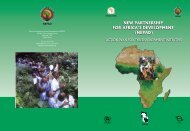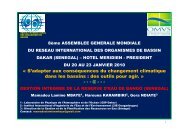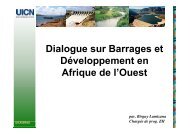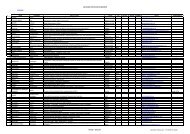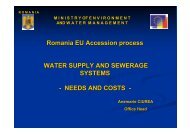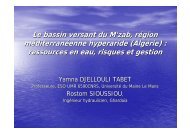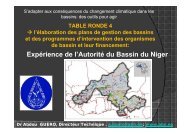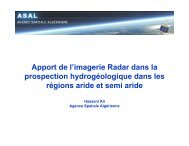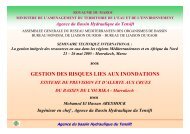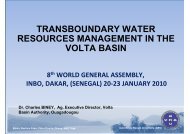background consultation document - European Commission - Europa
background consultation document - European Commission - Europa
background consultation document - European Commission - Europa
Create successful ePaper yourself
Turn your PDF publications into a flip-book with our unique Google optimized e-Paper software.
The EU can contribute to addressing this problem by supporting integrated water<br />
management in developing countries in its development cooperation policy (e.g. via a<br />
renewed EU Water Initiative). This is particularly important if one considers the virtual<br />
flow of water embedded in traded agricultural and industrial products. Both virtual water<br />
importers and exporters share the responsibility of not depleting water resources in the<br />
exporting countries. Mismanagement and wastage of water in water scarce countries<br />
could have very negative consequences on local development and even be the cause of<br />
migration flows. Therefore, the development of sustainable water management in the<br />
exporting countries, e.g. by increasing water efficiency and improving the choice of<br />
crops and other products, seems the most promising option.<br />
While the EU already has in place a framework for the sustainable management of water,<br />
the issue of virtual water is not only of global relevance but is also important within the<br />
EU, in relation to water balances (section 4. above) for agricultural and industrial<br />
products. Therefore options b) to d) below are also relevant within the EU.<br />
Problem 12: Competing demands for scarce water resources may lead to an estimated<br />
40% supply shortage by 2030. Mismanagement and wastage of water in water scarce<br />
countries could have very negative consequences on local development and even be the<br />
cause of migration flows from developing countries.<br />
Options to address the problem:<br />
a) Help developing countries to put in place integrated sustainable water management<br />
trough EU development cooperation.<br />
b) Raise consumers' awareness of the water footprint of products.<br />
c) Keep under review water foot printing tools with a view to test their usefulness for<br />
voluntary product labelling (e.g. as part of EU Ecolabel).<br />
d) Mandatory labelling of most embedded water intensive products.<br />
.<br />
16



